
Designed in Hackney: Lufthansa Business Class Seat and Cabin by PearsonLloyd
Designed in Hackney: the new business class seat and cabin designed by Hackney studio PearsonLloyd for German airline Lufthansa was launched this week.
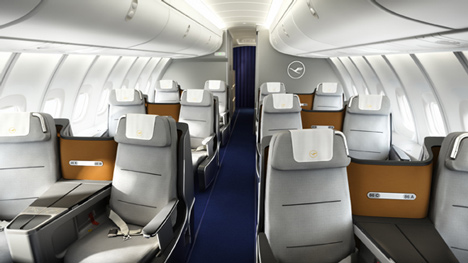
All passengers face forwards and pairs of seats are positioned in a v-shape, with the diagonal intended to give a little sense of privacy and allow for a 1.9 metre flat bed.
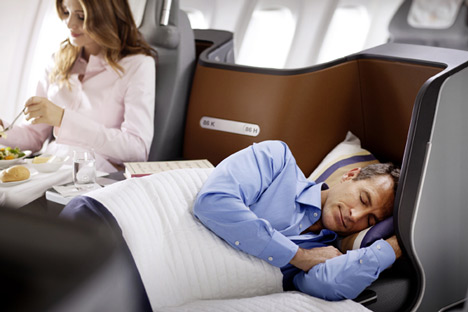
The seat-backs of each pair are wrapped by a screen lined with brown synthetic leather.
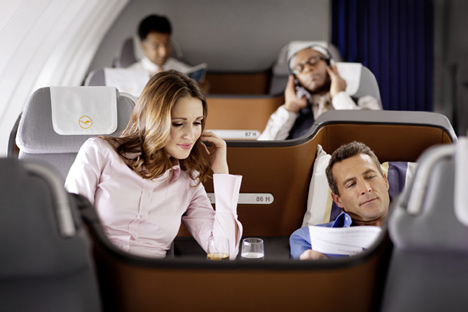
The back of this shell houses entertainment and storage for those behind, plus foot rests divided by a central fin.
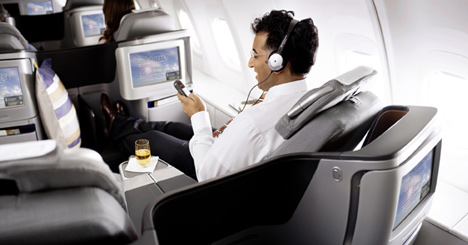
Tray tables, lifejackets and storage are located in the central console, which has recesses in the sides to allow more room for shoulders when lying down.
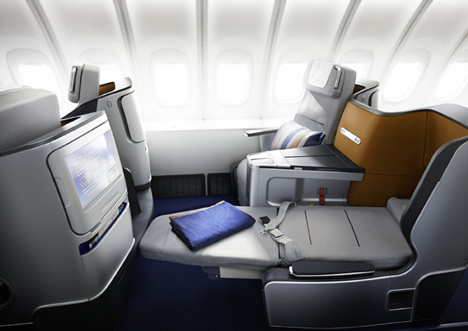
The materials and colour palette were selected to create a more domestic atmosphere than Lufthansa's usual industrial look.
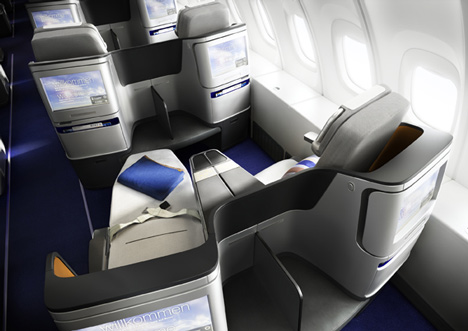
Their studio is based on Drysdale Street, just north of Old Street.

See more work by PearsonLloyd on Dezeen here and more transport design here.
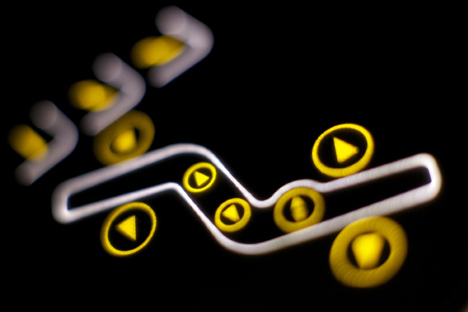
Check out all the stories in our Designed in Hackney feature here.
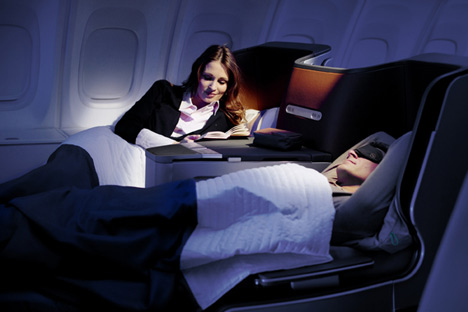
Photographs are by Jens Goerlich.
Here are some more details from PearsonLloyd:
Lufthansa’s new Business Class Seat and Cabin designed by PearsonLloyd, developed in conjunction with Lufthansa and B/E Aerospace who engineered and are manufacturing the seat

The new Business Class Seat and Cabin for Lufthansa’s Boeing 747-8 fleet, designed by PearsonLloyd, was launched this week.
PearsonLloyd won the project after extensive investigation of cabin space and passenger ergonomics, which resulted in this compelling and elegant design solution. The resulting design provides a lie-flat bed of 1.98metres, and gives the highest possible value and comfort to the passenger, in terms of seat space, functionality and overall cabin environment.
The’ V’ layout of the seat is pivotal to the design. This seat configuration allows all passengers to face forward, but with increased privacy. The layout also allows a maximised bed length and seat width. The cabin feels more spacious due to increased corridor space and half height monuments offer increased site lines. Space gains allow passengers and crew to pass each other in the aisles more easily and calmly navigate around the cabin. The design has the added benefit of providing passengers who are travelling together with better privacy and communication, whilst at the same time ensuring that passengers travelling alone have an appropriate degree of separation.
All amenities are configured to ensure complete satisfaction, from the frequent traveller on demanding business trips, to the new, or occasional traveller. Each passenger seat pair is contained within an elegantly formed outer shell. The shell provides a housing for stowage and services such as the in-flight entertainment system, but also produces a controlled, calm and private environment without closing the passenger off from the cabin environment altogether. The harmonious, wave-like outer shell provides protection and privacy and is detailed with a unique silver shroud. Internally, the shell is lined with the introduction of a soft synthetic leather, introducing for the first time the hazel colour, a development of the Lufthansa yellow. When the seat is in the bed mode this becomes the more prominent material, creating a softer and more domestic environment.
The iconic wave-like shell is maintained across the fleet, although the angle of the seats adapt to the craft. In this way, a coherent seat design is offered to the passenger whilst maintaining functional efficiency in terms of component count, head count and cabin design.
The centre console contains the tray table, personal stowage and life vest, among other amenities. The tray table is maximized in size to cater for both dining and working. It’s bi-fold design enables the passenger to decide on his needs and use it partially folded, or fully unfolded. The seat passenger control unit is situated inbetween the leather arm cap and cocktail tray and is at hand for both seat and bed modes. It has a carefully designed graphic, which is intuitive to use, such as the tactile button for taxi, takeoff and landing, which allows passengers to easily return to take off and landing position without looking at the control unit.
Privacy and space are provided by the shell’s profile and cut-aways. The feet are shielded in the ottoman area via a central fin which simply divides the passengers. Shoulder space used when sleeping, is facilitated by a recess in the console and this is added to by the aisle side armrest that can be lowered and docked flush into the end bay. to provide uninhibited movement whilst sleeping and maximizing bed width.
The location of functional components underneath the armrest ensures that they are only visible when the passenger needs to access them. Ergonomics was integral to this design from the outset. Passenger contact surfaces have been tailored to be soft and friendly whilst hard surfaces have been fine-tuned in terms of material and design, to be hardwearing without becoming worn or dirty. The seats have almost infinite adjustability from upright to bed positions and have an adjustable lumbar. It also has an adjustable air cushion system by Lantal (except on the 747-8i). The colour and materials are intended to evoke a sense of well-being and calm, deliberately moving away from the more technical colours and materials traditionally associated with Lufthansa.
The materials not only promote a dynamic yet calm aesthetic but belie a very logical and durable build. The colours and materials, like the design itself, are designed to be able to stand the test of time across the lifespan of the product and in a sense be timeless. Across the fleet there is maximum commonality among all parts, improving in-flight service and minimizing repair, spare parts and maintenance. These features not only benefit the total cost of ownership, but both crew and ultimately passengers as well. Every effort has been made to ensure this seat is great to use for all, provides superior comfort and amenities, upholding the very high standards that Lufthansa brings to all of its many offerings.
Designed in Hackney map:
.
Key:
Blue = designers
Red = architects
Yellow = brands
See a larger version of this map
Designed in Hackney is a Dezeen initiative to showcase world-class architecture and design created in the borough, which is one of the five host boroughs for the London 2012 Olympic Games as well as being home to Dezeen’s offices. We’ll publish buildings, interiors and objects that have been designed in Hackney each day until the games this summer.
More information and details of how to get involved can be found at www.designedinhackney.com.